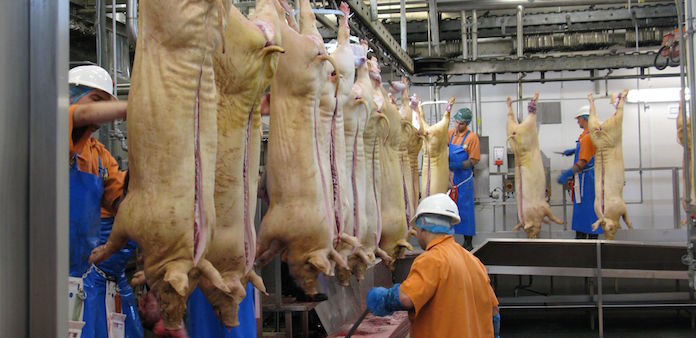The latest FAO food Outlook, including the latest forecast for how the global meat industry developed in 2017, has now been published.
According to AHDB analysis, cverall, after stagnating in 2016, world meat production is forecast to recover in 2017, increasing by just over 1% to 324.8 million tonnes. This follows from moderate increases in bovine, pig and poultry meats and a modest gain in ovine meat. After two years of downsizing associated with an on-going process of reforms, meat production in China, the world’s largest meat producer, is expected to remain stable around the 2016 level. Expansions in Chinese ovine, pig and bovine meats are anticipated to compensate for a marked decline in poultry meat, constrained mainly by the spread of the avian influenza.

World pig meat output is forecast to rise by 1% to nearly 117 million tonnes in 2017, recovering from a slight decline in 2016 and setting a new record. Expanded output is forecast to originate in China, the US, Russia and the Philippines, but also Canada, Vietnam, Mexico, and South Korea. However, pig meat output is likely to decline in the EU, Ukraine and Japan.
China’s pig meat output is anticipated to rise by over 1% to nearly 53 million tonnes, reflecting a largely positive outcome of strict environmental and sanitary regulations. In the US, pig meat output is anticipated to rise by almost 4% to 11.7 million tonnes, bolstered by higher slaughter numbers and carcase weights. These have been supported by expanding operations integrated with those of Canada and Mexico. In contrast, EU pig meat production is likely to stabilize around 23.4 million tonnes, constrained by reduced sow herd numbers and falling import demand, especially from China.
As such, world trade in pig meat is forecast to decline marginally, by less than 1%, to 8.2 million tonnes. This is compared with a substantial 14% year-on-year increase in 2016. The considerable slowdown reflects a decline in pig meat imports by China of 14% in 2017, to 2.2 million tonnes. Imports are also expected to decline in Vietnam and Russia. These reductions are expected to more than compensate increased imports elsewhere.
On account of the slow import demand from Asia and large export availabilities, international price quotations for pig meat weakened for the third consecutive month in November. Although, according to the FAO, global pig meat prices were still nearly 7% higher than July. Overall, this meant the FAO Meat Price Index averaged 173.2 points in November, almost unchanged from its slightly revised October value.




